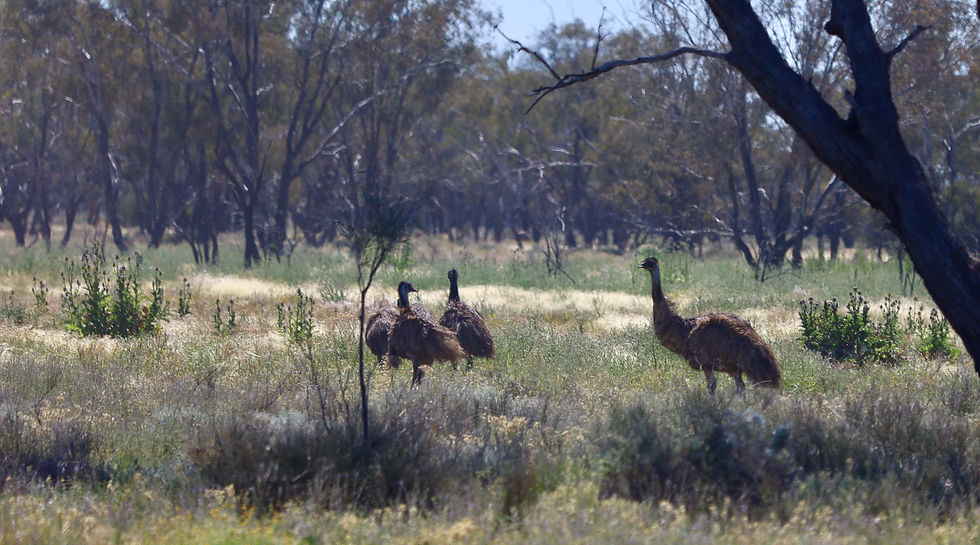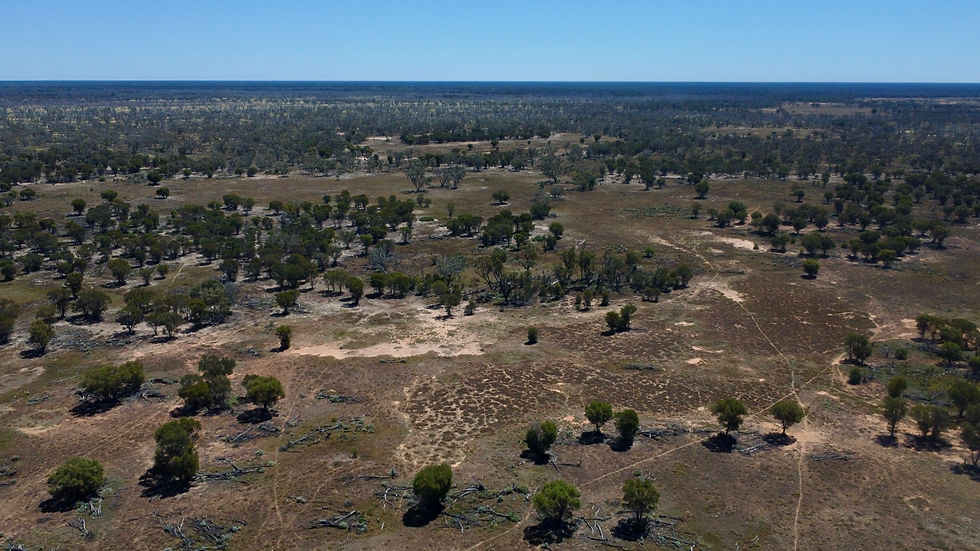CULGOA NP... NSW-QLD
- Woolgoolgaoffroad
- Oct 28
- 4 min read
I was having a quiet beer at the iconic Hebel pub, on the NSW QLD border 700km west of Brisbane thinking what a remote and isolated place this is. But back in the day it was a hive of activity with bushrangers, Cobb and Co stopover plus a border crossing customs office.

Even today, it’s like a step back in time where the pub still looks the same, it has wonky floors and you’ll need to duck under the roof as you walk under the awning. In the 1890’s legend has it that Dan Kelly and Steve Hart from the Ned Kelly Gang lived in the Hebel area under assumed names and they frequented the hotel. Hebel was once known as Kelly’s Point and changed name to Hebel in the early 1890s. Back then there was a dance hall, police station and a school.
These days, the Hebel pub is a tourist destination for travellers wherever they maybe heading and during the cooler months, it’s a busy place. The front of the pub has artwork by John Murray and the inside is decorated with a blend of recycled items collected over the years. Across the road is the Hebel store which serves up some of the best country food around, they are also the local tourist office.

In the Bicentennial park, a historical circle walk has been created for visitors to learn about significant events and history that helped create Hebel and surrounding districts. The origin of Hebel’s name is a bit of a mystery although some say it came from a German immigrant who set up a base for the stage coaches, other reports say the local Aboriginal meaning is ‘hot place’. There is free camping at Judd’s Lagoon on the banks of the Bokhara River and from here you can walk to town or along the river to where the weir holds the towns water supply. The Bokhara River is also a significant historical spot as in 1846 explorer Sir Major Thomas Mitchell passed by on his way north towards the Gulf of Carpenteria from Sydney.

It was rumoured that sheep and cattle rustling, smuggling booze and evading taxes were on the increase so in 1859 when QLD and NSW became separate states a customs office and police station was setup on nearby Currawillinghi Station.

My goal while here was to head out the remote Culgoa National Park 80km to the west. The drive took me through Goodooga which has a small supermarket, fuel and a Great Artesian Bore Bath complex which is popular with the grey nomads. Heading out of Goodooga along Brenda Road it’s not long before you cross Culgoa River and head through huge cropping fields to the entry to Culgoa Floodplain National Park.

The park is well sign-posted, and if you head down near the rangers station an information board has a park map and features of the park. There are no fees to camp in the park, just a booking fee. Phone service is a bit sketchy through the park, so if you're staying do it back at Goodooga or Hebel.

There are two camping areas in Culgoa, and just near the rangers office is the beautiful Byra Lagoon camping area. When the lagoon is full its a birdwatchers paradise with nearly 170 different species that have been spotted here. Other animals that frequent the water hole include Kangaroos, Emu’s, Skinks and Planigales, which is a small carnivorous marsupial that hunts at night in search of small insects. Culgoa is a paradise for nature lovers and there are walks that range up to 8km exploring the areas around the wetlands, Culgoa River and through the Coolabah Woodlands.

For a more remote camp experience and to explore the outer regions, Redbank Hut is 12km further west. In the 1900’s there were several large stations that ran cattle and sheep through the area and over the years the stations were acquired to increase the size of Culgoa. Redbank Hut was a pastoral outstation with a bore to supply the home and dam. It’s a raw camping area with no shade but it’s peaceful and with the dam nearby there’s always chance of spotting some wildlife.

The landscape is barren and flat yet part of an ancient landscape that was covered with water 200 million years ago and following millions of years of weathering the only thing left are hard, flat-topped rocks surrounding Culgoa that rise ever so slightly above the ground.

Murrawarri people from Gandugari mob have a long association with Culgoa with it being their traditional land by having significant and cultural value. Even today, Murrawarri descendants work with and are NPWS rangers, they still retain strong beliefs, knowledge and personal history through the area.
West Culgoa Road heads out of the park onto Jobs Gate Road and further north to Cunnamulla. Culgoa is a rich ecological floodplain that supports a diverse array of wildlife within the Coolibah Woodlands. The park is best experienced in the cooler months, and it’s a great stopover when exploring Western Queensland.

WHERE IS CULGOA NP
Culgoa National Park is a little over 700km west of Brisbane on the NSW-QLD border. It’s a remote and small park and holds special meaning to the local Aboriginal people. Hebel, 140km east of the park is now a tourist destination but also has an interesting historical past.
WHAT TO SEE AND DO
There are two camping areas, Redbank Hut and Byra Lagoon. Both have no facilities yet different in their own way. Best times to go would be during spring after winter rain when the outback colour comes to life or during winter which would be perfect for the long hikes through Culgoa. At the moment there are no camp fees only a booking fee to stay in Culgoa. Relevant info this can be found on Queensland’s Department of National Parks website (www.npsr.qld.gov.au). The Hebel general store can provide further information and can be contacted on (07) 4625 0920. Hebel has camping options either behind the general store or on the towns limits near the weir.



























Comments